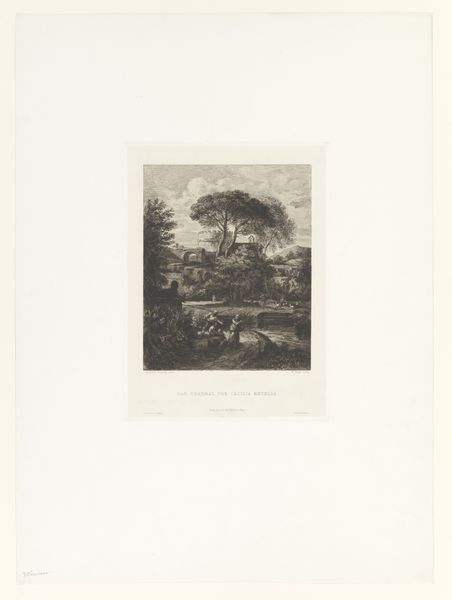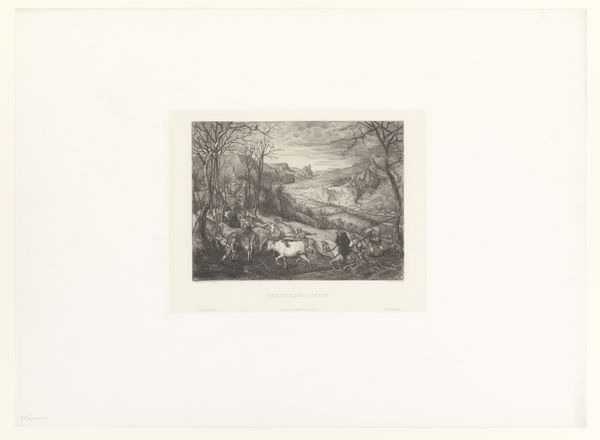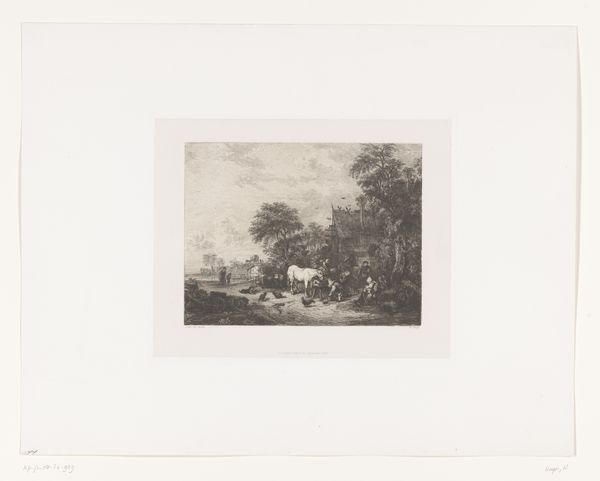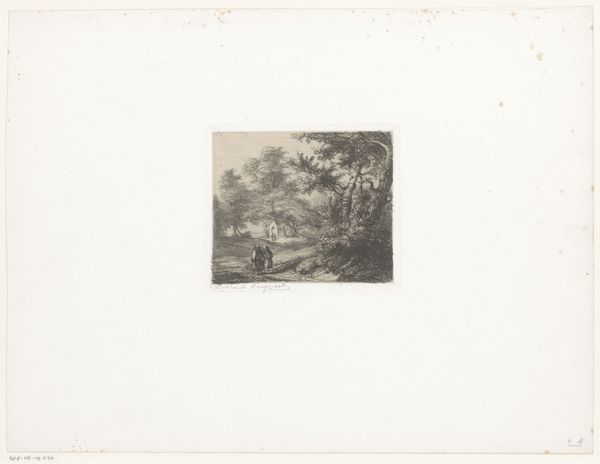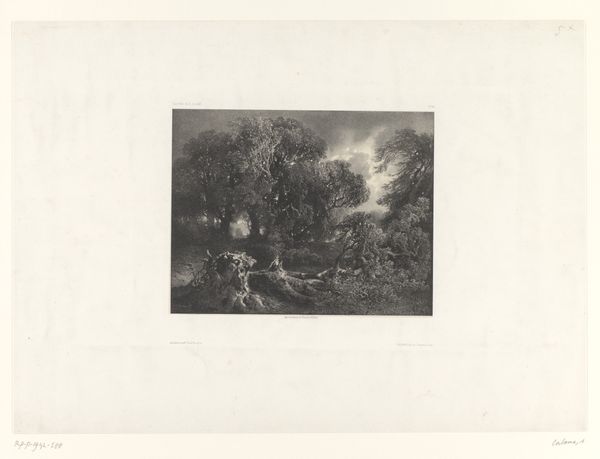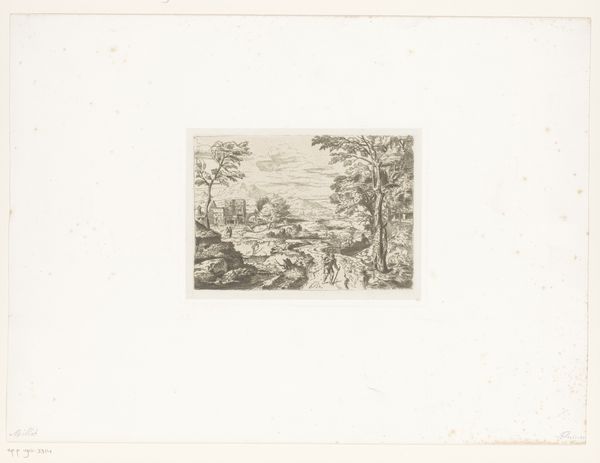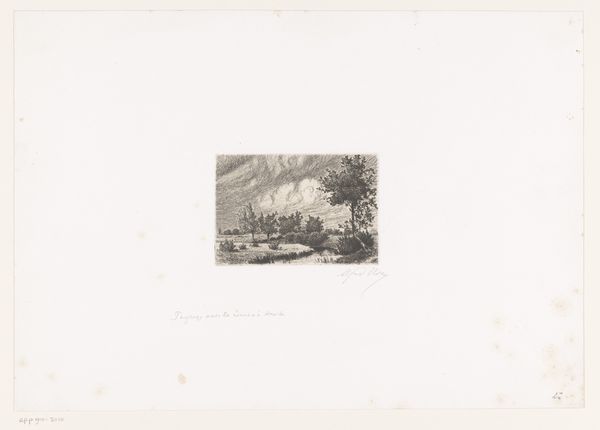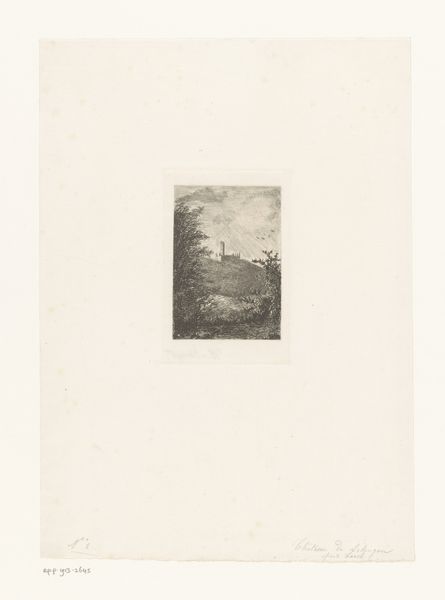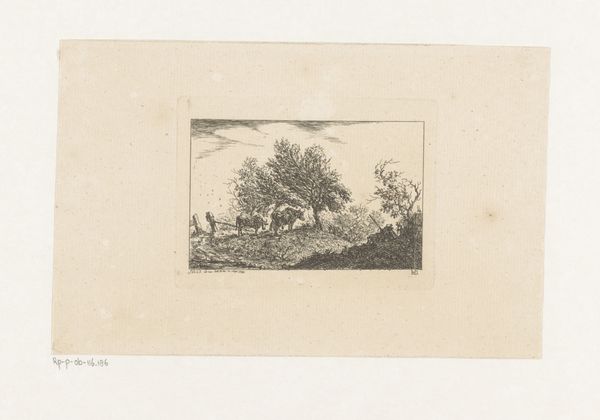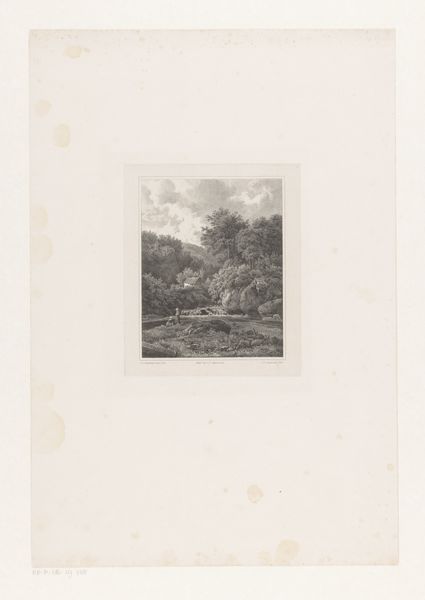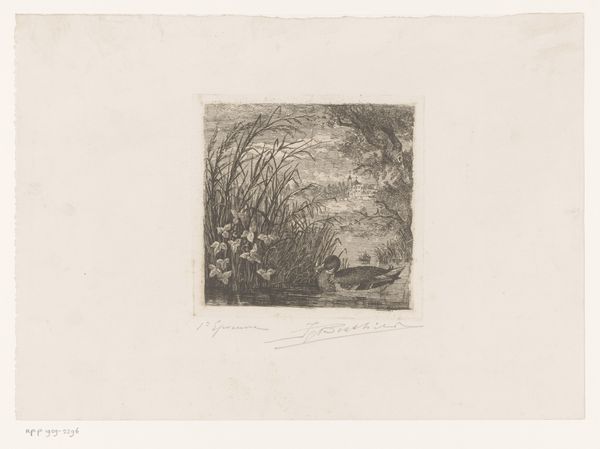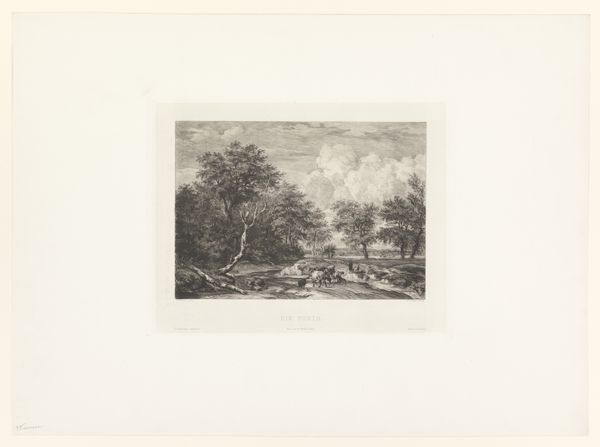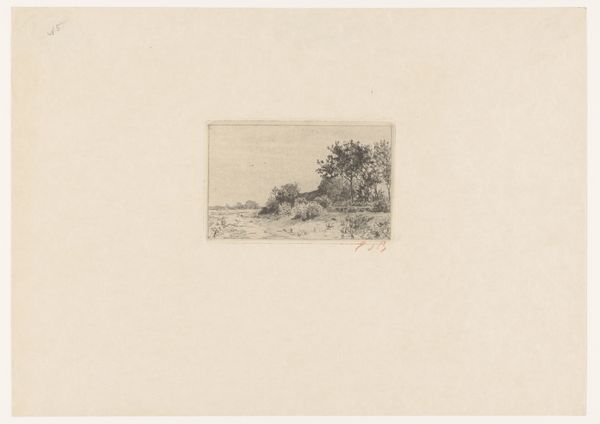
drawing, print, etching, paper, ink
#
drawing
#
ink paper printed
# print
#
etching
#
landscape
#
paper
#
road
#
ink
#
genre-painting
Dimensions: height 118 mm, width 161 mm
Copyright: Rijks Museum: Open Domain
Curator: This etching, “Landschap met links een huis en rechts een boom,” or “Landscape with a House on the Left and a Tree on the Right,” is attributed to Karel Theodoor Hippert. Created sometime between 1849 and 1910, it invites us to consider the everyday beauty found in rural settings. Editor: Oh, I like this. It's got a sort of quiet charm, like a forgotten storybook illustration. The stark contrast of the ink makes it feel both rustic and somehow, slightly haunting, wouldn't you agree? Curator: Haunting? I see the rusticity. I think it really plays with this burgeoning sense in the Netherlands to celebrate the small and quaint rather than the grandiose historical paintings that had come to dominate the art world previously. Here you get a little vignette of local life. Editor: Local life as filtered through Hippert’s mood, of course! The starkness of the etching captures a melancholic beauty. I think he’s less concerned with documentary accuracy and more with conveying an emotion. Curator: Maybe so, and I think we also need to consider that during this period, the etched and printed image also really gained popularity, so it does point to how people were consuming art, in general. It democratizes it in a sense. Editor: Yes! Bringing art out of the grand salon and into more humble settings. It makes you wonder about who would have hung this on their wall, and what dreams of the countryside they were harboring, don’t you think? Perhaps an urban dweller dreaming of escape. Curator: Definitely, there's a real accessibility about its scale, and printmaking made that so much easier, culturally and economically. These landscapes celebrated a slower, simpler pace of life, but also made art more approachable for people who did not come from wealth. Editor: So true, a snapshot of yearning reproduced and dispersed. When I consider the details that come through the ink, I’m drawn to consider those distant figures traveling down the dirt path, the looming tree seeming to guard their travels, that rickety-looking house-- Curator: These small genre scenes often did weave in broader themes of everyday toil and our relationship to the natural world, so you have identified that quite well. The figures also hint to the economic background we touched upon. It wasn't simply beauty. Editor: True enough. Ultimately, I like how something so small, so modest, can spark such a vivid sense of another place, another time, but with a very present emotion. Curator: A very Dutch moment, then? Shall we go on?
Comments
No comments
Be the first to comment and join the conversation on the ultimate creative platform.
